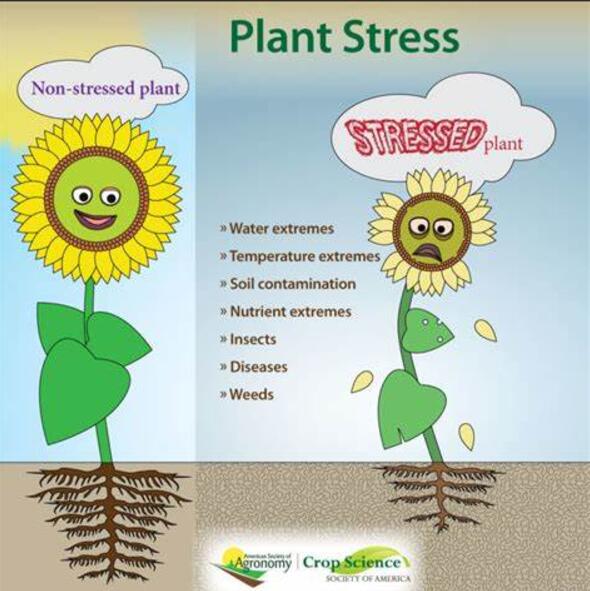Blue and far-red light modify the adaptation of Lemna minor L. to cadmium stress based on glutathione, phytochelatin, chemical element and free amino acid levels
IF 6.8
Q1 PLANT SCIENCES
引用次数: 0
Abstract
Light quality has been shown to modulate plant responses to abiotic stresses. Here we studied whether alterations in the light spectrum affect the adaptation of Lemna (L.) minor L to cadmium (Cd) by determining changes in plant growth, Cd uptake, phytochelatins, glutathione, chemical elements and free amino acids levels upon application of the heavy metal. . The plants were cultivated in white light (W) or in white light supplemented with blue (B) or far-red (Fr) light and treated with Cd. The Cd-uptake and the phytochelatin accumulation enabling Cd-chelation was much greater in W light compared to B and Fr light. B light and Cd induced the greatest accumulation of Na, K and certain free amino acids such as Gly and Ala which may form complexes with Cd. Fr light and Cd in turn resulted in the greatest cysteine and glutathione levels, which may contribute to the proper function of the redox-sensitive proteins. In summary, the greatest Cd-extraction capacity of L. minor can be reached in W light. In contrast, B and Fr light are appropriate for the reduction of Cd-uptake. In addition, B light improves the Cd tolerance through accumulation of Cd-complexing amino acids and Fr light may have such effect through its influence on the thiol-dependent redox environment of tissues.

蓝光和远红光对小菜菜谷胱甘肽、植物螯合素、化学元素和游离氨基酸水平的影响影响了其对镉胁迫的适应性
光质量已被证明可以调节植物对非生物胁迫的反应。本研究通过测定重金属胁迫下植物生长、镉吸收、植物螯合素、谷胱甘肽、化学元素和游离氨基酸水平的变化,研究了光谱变化是否会影响小莴苣对镉的适应性。在白光(W)或白光加蓝光(B)或远红光(Fr)下培养植株,并进行Cd处理。与B光和Fr光相比,W光对Cd的吸收和使Cd螯合的植物螯合素积累要大得多。光照和Cd诱导Na、K和某些游离氨基酸如Gly和Ala的积累最多,这些氨基酸可能与Cd形成复合物。光照和Cd导致半胱氨酸和谷胱甘肽水平最高,这可能有助于氧化还原敏感蛋白的正常功能。综上所述,在W光下,小叶草的cd提取能力最大。相比之下,B光和Fr光适合于减少cd的摄取。此外,B光通过Cd络合氨基酸的积累提高Cd耐受性,Fr光可能通过影响组织中硫醇依赖的氧化还原环境来达到这一效果。
本文章由计算机程序翻译,如有差异,请以英文原文为准。
求助全文
约1分钟内获得全文
求助全文
来源期刊

Plant Stress
PLANT SCIENCES-
CiteScore
5.20
自引率
8.00%
发文量
76
审稿时长
63 days
期刊介绍:
The journal Plant Stress deals with plant (or other photoautotrophs, such as algae, cyanobacteria and lichens) responses to abiotic and biotic stress factors that can result in limited growth and productivity. Such responses can be analyzed and described at a physiological, biochemical and molecular level. Experimental approaches/technologies aiming to improve growth and productivity with a potential for downstream validation under stress conditions will also be considered. Both fundamental and applied research manuscripts are welcome, provided that clear mechanistic hypotheses are made and descriptive approaches are avoided. In addition, high-quality review articles will also be considered, provided they follow a critical approach and stimulate thought for future research avenues.
Plant Stress welcomes high-quality manuscripts related (but not limited) to interactions between plants and:
Lack of water (drought) and excess (flooding),
Salinity stress,
Elevated temperature and/or low temperature (chilling and freezing),
Hypoxia and/or anoxia,
Mineral nutrient excess and/or deficiency,
Heavy metals and/or metalloids,
Plant priming (chemical, biological, physiological, nanomaterial, biostimulant) approaches for improved stress protection,
Viral, phytoplasma, bacterial and fungal plant-pathogen interactions.
The journal welcomes basic and applied research articles, as well as review articles and short communications. All submitted manuscripts will be subject to a thorough peer-reviewing process.
 求助内容:
求助内容: 应助结果提醒方式:
应助结果提醒方式:


